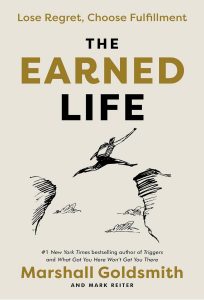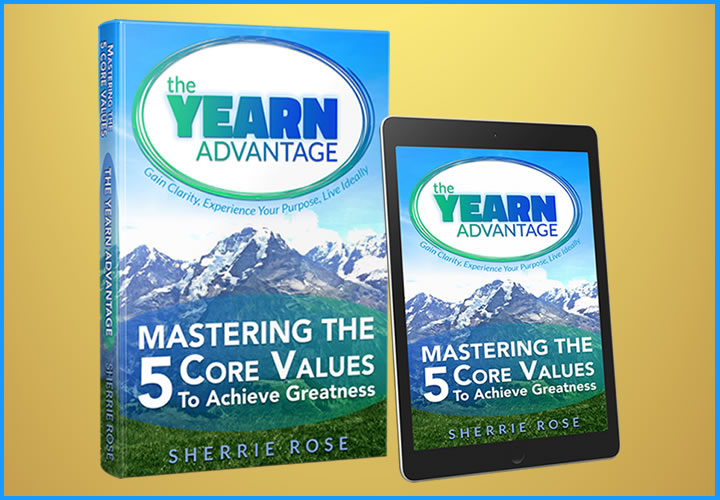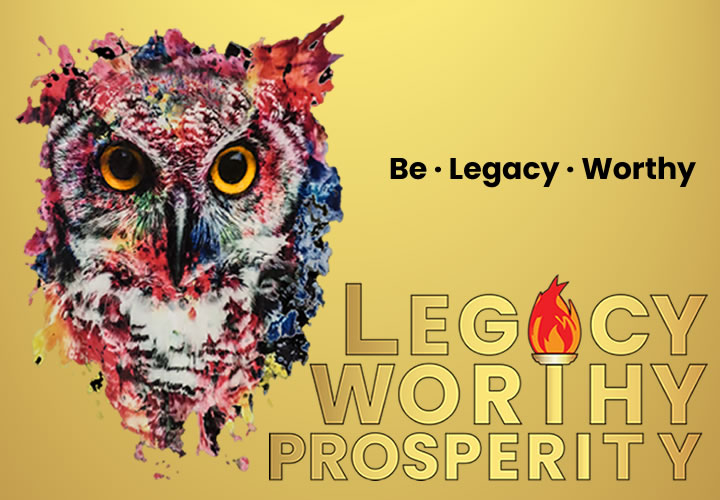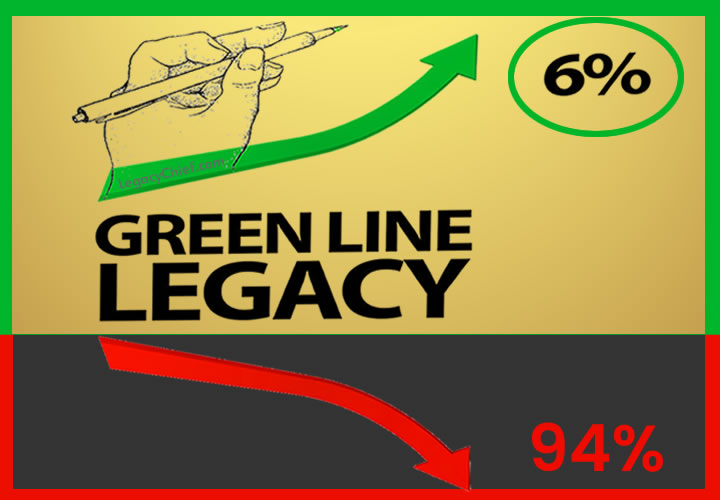The Earned Life and the Legacy Worthy Life: Lessons on Satisfaction, Fulfillment and Enhavim

The Earned Life and the Legacy Worthy Life: Lessons on Satisfaction, Fulfillment and Enhavim
To be legacy worthy is to embark on a holistic path toward a ‘Legacy Worthy Life.’ This starts by setting a deliberate enhavim (meaningful endeavor) that aligns with your values and principles. It involves living with integrity and empathy, being mindful of the impact of your actions, and taking responsibility for your choices. This commitment to ‘purpose and mission led by vision’ helps authenticity guides you in making small but meaningful changes today. Striving to create a positive and lasting impact on the world, and inspiring others to do the same. In essence, ‘To be legacy worthy’ is an integral part of living a ‘Legacy Worthy Life,’ where personal fulfillment and a lasting positive impact are harmoniously woven together.
There are many similarities to Marshall Goldsmith’s 2022 book, The Earned Life: Lose Regret, Choose Fulfillment. It is a thought-provoking book that delves deep into the realms of personal development and life satisfaction. Goldsmith, a renowned executive coach and leadership expert, draws upon his extensive experience in working with top executives and leaders to distill valuable insights for a broader audience.
At its core, Goldsmith’s book revolves around the concept of living a life without regret. Goldsmith argues that many people reach a point in their lives where they look back with a sense of remorse or missed opportunities. They may have made choices driven by external pressures, societal expectations, or the pursuit of material success, but these choices may not align with their true values and desires.
Goldsmith provides a roadmap for readers to actively experience their lives in a way that reflects their authentic selves. He emphasizes the importance of self-awareness and introspection, urging individuals to identify their core values, passions, and aspirations. By understanding what truly matters to them, readers can make more deliberate choices and set meaningful goals.
The book also addresses the role of regret in our lives. Goldsmith acknowledges that some regrets are inevitable, but he encourages readers to transform regrets into catalysts for positive change. Instead of dwelling on past mistakes, he advocates for using these experiences as valuable lessons that can inform future decisions.
Throughout the book, Goldsmith offers practical exercises and actionable advice to help readers navigate the journey toward a more fulfilling life. He discusses topics such as setting priorities, managing time effectively, building meaningful relationships, and finding purpose.
Ultimately, “The Earned Life” is a guide to making intentional choices and crafting a life that aligns with one’s deepest values and aspirations, in essence, your enhavim. It inspires readers to shed the burden of regret and instead focus on creating a life they can truly feel proud of and fulfilled by. Goldsmith’s wisdom and insights offer a roadmap for anyone seeking greater satisfaction and purpose in their personal and professional lives.
BOOK OVERVIEW
The central theme of the book: living a life without regret and achieving fulfillment.
Next is each chapter idea and how each chapter relates to the Enhavim concept.
Chapter 1: The Regret Paradox
In the first chapter, Goldsmith delves into the paradox of regret, where individuals often look back at their lives with a sense of missed opportunities or choices they wish they had made differently.
Enhavim reinforces the idea that a clear and compelling vision can guide individuals away from choices that lead to regret and toward actions that align with their long-term aspirations.
Chapter 2: Defining Your Authentic Self
Goldsmith encourages readers to engage in introspection and self-discovery, identifying their core values, passions, and authentic desires. Exercises to help readers gain clarity on their true selves.
Enhavim emphasizes that purpose is an integral part of one’s authentic self, serving as the driving force that propels individuals toward meaningful endeavors.
Chapter 3: The Power of Intention
This chapter explores the significance of setting clear intentions and how they can shape one’s life choices. How intentionality can guide decision-making.
Enhavim aligns with intentionality, stressing that a visionary framework, driven by a grand vision, can guide individuals in making purposeful and intentional decisions.
Chapter 4: The Time-Value Dilemma
Goldsmith discusses the challenge of time management and urges readers to align their use of time with their priorities. Strategies for avoiding time-related regrets.
Enhavim recognizes time as a critical resource in fulfilling the mission and emphasizes the need to manage it effectively to realize the overarching vision.
Chapter 5: Navigating Relationships
The chapter underscores the importance of building and nurturing meaningful relationships, both personally and professionally.
Enhavim acknowledges that collaborative efforts are often essential in achieving a long-term vision, and meaningful relationships are key to sustaining such endeavors.
Chapter 6: Turning Regrets into Progress
Goldsmith explores the idea that regrets can serve as catalysts for positive change, motivating individuals to learn from past mistakes.
Enhavim aligns with this concept, emphasizing that setbacks and regrets can be transformed into opportunities for growth and development on the journey toward a greater purpose.
Marshall discusses the power of regret and the importance of learning from past regrets for an earned life.
There is a misconception that external success (resume stuff) automatically leads to happiness, peace, or fulfillment.
Marshall highlights the societal influence of commercials and advertisements that reinforce the idea that buying products or achieving external goals will bring happiness.
Chapter 7: Finding Purpose
In this chapter, Goldsmith delves further into the concept of purpose and its central role in leading a fulfilling life.
Enhavim extends this exploration by emphasizing the comprehensive nature of its approach, where purpose and mission are seamlessly led by a visionary framework, creating a more focused and potent path toward the meaning you create.
Chapter 8: The Fulfillment Formula
Goldsmith summarizes key principles for achieving a life without regret and experiencing genuine fulfillment.
Enhavim’s holistic framework, encompassing vision, purpose, and mission, is highlighted as the essential formula for crafting a transformative and meaningful endeavor.
“We are living an earned life when the choices, risks, and effort we make in each moment align with an overarching purpose in our lives, regardless of the eventual outcome.”
That overarching ‘purpose’ is better described as enhavim: purpose and mission led by vision.
CREDIBILITY AS PART OF AN EARNED LIFE
We all want to build credibility. The concept of earning credibility twice underscores the multifaceted nature of establishing trustworthiness and respect in personal and professional contexts. Credibility must be earned twice with these critical components: Competence and Recognition.
Competence – Doing Great Work:
To earn credibility through competence, one must consistently excel in their field, industry, or role. This involves acquiring the necessary knowledge, skills, and expertise relevant to their domain.
Competence is not just about meeting minimum requirements but consistently going above and beyond, striving for excellence in every endeavor.
Competence encompasses expertise, skills, and the ability to perform tasks effectively and efficiently.
It requires continuous learning and improvement to stay relevant in a rapidly changing world.
Competent individuals often take initiative, solve complex problems, and consistently deliver high-quality outcomes.
Building competence is a long-term endeavor, requiring dedication, practice, and a growth mindset.
Recognition – Being Acknowledged for Great Work:
Recognition involves external validation and acknowledgment of an individual’s competence and contributions.
It can come in various forms, including awards, promotions, positive feedback, testimonials, or referrals.
Recognition enhances an individual’s reputation and reinforces the perception of trustworthiness.
Building recognition often involves effective communication, networking, and showcasing one’s achievements.
In essence, the idea that credibility must be earned twice underscores that it’s not enough to simply possess competence. The external perception and acknowledgment of that competence are equally crucial. To truly establish oneself as a trustworthy and credible individual, it’s essential to both excel in one’s field (competence) and ensure that others are aware and acknowledge that excellence (recognition). This dual approach solidifies one’s credibility and paves the way for continued success and trust-building in personal and professional relationships.
Additionally, “The squeaky wheel gets the oil” is a saying that underscores the importance of drawing attention to oneself or one’s needs in order to receive recognition and acknowledgment for great work or specific concerns. It’s a practical approach to ensure that one’s efforts or issues do not go unnoticed and that they receive the necessary attention or assistance. Here, “squeaky” implies being assertive or vocal to make sure one’s accomplishments or concerns are acknowledged and addressed and recognition given.
GOLDSMITH’S AAA MODEL
Goldsmith’s Action, Ambition, and Aspiration model:
This model involves a framework for setting and achieving goals. Action represents taking concrete steps, ambition is the desire for success, and aspiration relates to one’s long-term vision.
Balancing these elements helps individuals pursue their aspirations effectively while staying grounded in actionable steps.
Ambition (VISION – “What”):
Ambition represents the visionary aspect of the AAA model. It involves setting clear and inspiring goals or a grand vision for the future.
Similarly, in the Enhavim framework, VISION plays a central role. It’s about having a compelling and vivid picture of what one aspires to achieve, both personally and professionally.
Ambition, like Vision, provides direction and a sense of purpose, guiding individuals toward their desired outcomes.
Aspiration (PURPOSE – “Why Motivation”):
Aspiration in the AAA model corresponds to the WHY behind one’s goals and ambitions. It delves into the deeper motivations and values that drive a person.
In Enhavim, PURPOSE is akin to Aspiration. It represents the driving force that fuels motivation and determination. It answers the question of why a particular vision or ambition is meaningful to an individual.
Just as Aspiration provides the “why” behind actions, PURPOSE in Enhavim serves as the inner fire that keeps individuals committed to their mission.
Action (MISSION – “Who and How”):
Action in the AAA model is all about the concrete steps and strategies needed to achieve one’s ambitions and aspirations.
MISSION in Enhavim aligns closely with Action. It involves the tangible commitment, the allocation of resources, and the specific actions taken to bring the vision and purpose to life.
Both Action and MISSION focus on the practical aspects of turning a vision and purpose into reality. They deal with the “who” (the individuals involved) and the “how” (the strategies and execution).
Summary and Comparison
In summary, the Action, Ambition, and Aspiration model in Marshall Goldsmith’s book and the Enhavim framework share similar principles and alignment:
Ambition (AAA) and Vision (Enhavim) provide the overarching vision and direction.
Aspiration (AAA) and Purpose (Enhavim) delve into the deep motivations and values behind one’s actions.
Action (AAA) and Mission (Enhavim) focus on the practical steps and strategies to achieve goals.
Both models emphasize the importance of having a clear and compelling vision, understanding one’s motivations, and taking purposeful action to lead a fulfilling life. They offer complementary perspectives on how to navigate the journey toward personal and professional growth and success.
Similarities: THE EARNED LIFE and THE LEGACY WORTHY LIFE
A “Legacy-Worthy Life” is a holistic approach to living that place equal emphasis on personal fulfillment and making a positive, lasting impact on others and the world.
To be legacy worthy is to embark on a holistic path toward a ‘Legacy-Worthy Life.’ This starts by setting a deliberate enhavim (meaningful endeavor) that aligns with your values and principles. It involves living with integrity and empathy, being mindful of the impact of your actions, and taking responsibility for your choices. This commitment to Purpose and mission led by vision helps authenticity guides you in making small but meaningful changes today. Then, striving to create a positive and lasting impact on the world, and inspiring others to do the same. In essence, ‘To be legacy worthy’ is an integral part of living a ‘Legacy-Worthy Life,’ where personal fulfillment and a lasting positive impact are harmoniously woven together.
A “Legacy Worthy Life” encompasses various key aspects that, when integrated, create a meaningful and fulfilling existence. Here’s an expanded perspective on these key aspects:
Balance of Present and Future: Living a legacy-worthy life means finding harmony between embracing the present moment and considering the consequences of your actions on the future. It involves savoring the joys of the here and now while being mindful of the long-term effects of your choices. This balance allows you to lead a life that is not solely driven by immediate gratification but also takes into account your future well-being and the well-being of others.
Long-Term Perspective and Impact: Legacy-worthy living recognizes that meaningful legacies are built over time. It acknowledges that the impact you aim to create may not be fully realized in your lifetime, but you still dedicate yourself to actions and contributions that will benefit future generations or society as a whole. This long-term perspective inspires patience, resilience, and dedication to your goals.
Alignment with Authentic Self and Society: At the heart of legacy-worthy living is the idea of aligning your choices and actions with your true, authentic self. It means understanding your values, passions, and aspirations and using them as a compass for your life’s journey. Simultaneously, you consider the broader impact of your decisions on society. It’s about being true to yourself while also contributing positively to the collective well-being.
Personal Fulfillment Without Regret: Holistic living prioritizes personal fulfillment without the weight of regret. You make choices and take actions that resonate with your innermost desires and values, leading to a life free from the burden of “what-ifs” and missed opportunities. This aspect encourages you to seek happiness and contentment within your own life, driven by your internal motivation and not external pressures.
Learning from regret is a major theme in Goldsmith’s book.
Personal Satisfaction and External Recognition: Legacy-worthy living recognizes the importance of both personal satisfaction and external recognition. It’s not solely about seeking validation from others or conforming to societal expectations, but it acknowledges that external recognition can be a form of validation for your contributions to others and society. Striking a balance between personal fulfillment and external recognition can provide a well-rounded sense of accomplishment and purpose.
This related to “Credibility Must Be Earned Twice.”
THE RECURRING THEMES OF AN EARNED LIFE:
Marshall Goldsmith discusses the concept of living an “earned life” and the three key variables that contribute to a fulfilling life.
Topic 1: The Three Variables to an Earned Life
Marshall introduces the concept of an “earned life,” emphasizing that it requires:
The alignment of three key variables: aspiration, ambition, and action. (mentioned earlier)
Aspiration involves understanding one’s purpose and why they are on Earth.
Ambition is about setting goals and achieving them, with a focus on accomplishments.
Action refers to the day-to-day engagement with life, enjoying the process rather than just pursuing results.
Marshall highlights the importance of balancing these three variables in the pursuit of a fulfilling life.
Topic 2: The Issue with Pursuit of Short-Term Gratification
Marshall reflects on his earlier career when he focused on success, recognition, and money but found himself emotionally broken.
He emphasizes that these external factors do not bring lasting fulfillment in life.
The importance of good health, human connections, and having a sense of purpose is highlighted.
Marshall shares a personal experience of a surfing mishap when he was 27 years old.
He describes how he took a risk and rode a nine-foot wave, which resulted in breaking his neck.
Marshall reflects on how he got lost in the moment, seeking short-term gratification without considering the long-term consequences.
The story serves as a lesson in calculating risks and opportunities and aligning actions with one’s larger life goals.
Topic 3: The Importance of Not Being Addicted to Results
Marshall Goldsmith, at the age of 74, discusses how he prioritizes his time with a focus on making a positive difference in as many lives as possible.
He shares his ongoing martial art project and mentions his plan to provide all of his materials for free to benefit a wider audience.
Marshall Goldsmith talks about creating a custom video bot to share his knowledge and continue his legacy even after he’s no longer present.
Marshall emphasizes that many people tend to get lost in the action phase, focusing on day-to-day tasks without considering higher aspirations or larger life purposes (enhavim).
Some individuals are stuck in the aspiration phase, dreaming big but not taking action to achieve those dreams.
He encourages people to avoid becoming addicted to results and tying their self-worth solely to achievements.
Marshall shares examples of highly accomplished individuals who found that happiness and achievement are independent variables.
He underscores the importance of enjoying the process of life itself, regardless of the level of achievement.
Related:
Goldsmith’s Seven Significant Barriers to Creation
Marshall Goldsmith identifies seven significant barriers that often hinder individuals from creating their own lives and achieving personal fulfillment.
- 1- Inertia – Stuck in the Present:
Inertia refers to the tendency to remain in our current state, even if it’s not aligned with our goals or desires.
Goldsmith highlights that inertia is a powerful force, and our current actions often dictate what we’ll be doing in the near future. Overcoming inertia requires conscious effort and a willingness to break out of routine.
Marshall describes inertia as the enemy of change and explains that it often leads to complacency.
He shares a personal story about his mentor, Paul Hersey, encouraging him to break the inertia of comfort and strive for personal growth.
Marshall emphasizes that being different and striving for improvement requires breaking the patterns of inertia.
- 2- Programming and Early Influences:
Our upbringing, including the influence of parents, teachers, and early role models, often shapes our beliefs, values, and life paths.
Changing these deeply ingrained patterns can be challenging, as they form the foundation of our worldview. However, recognizing and questioning these influences is the first step toward personal transformation.
- 3- Obligation and External Expectations:
Obligations, especially those imposed by societal norms or family expectations, can lead us to prioritize the desires and expectations of others over our own.
Parents often grapple with this barrier, feeling compelled to meet societal or family obligations even when they conflict with their personal aspirations. It requires courage to renegotiate these obligations.
- 4- Failure of Imagination – Lack of Creativity:
Some individuals struggle to envision creative alternatives for crafting their own lives.
Goldsmith points out that overcoming this barrier involves expanding one’s imagination and exploring unconventional paths. It requires breaking free from limiting beliefs about what is possible.
- 5- Pace of Change – Feeling Overwhelmed:
The rapidly evolving and increasingly complex world can leave individuals feeling overwhelmed and unable to keep up.
Coping with the pace of change necessitates adaptability and a commitment to continuous learning. It involves developing resilience to thrive in a dynamic environment.
- 6- Vicarious Living – Living Through Others:
Modern distractions like social media can lead to a form of vicarious living, where individuals invest excessive time in the lives of others through digital platforms.
To regain agency and create their own lives, people need to strike a balance between engaging with digital distractions and investing energy in personal growth and experiences.
- 7- Running Out of Runway – Perceived Time Constraints:
Many people believe they have less time (runway) to achieve their goals and dreams than they actually do.
Goldsmith emphasizes the importance of realizing that there is more time than one might think, even in careers with seemingly limited timeframes. This realization can reduce unnecessary pressure and facilitate proactive planning.
Goldsmith’s exploration of these seven barriers highlights the challenges that individuals face when striving to create their own lives. Overcoming these barriers often requires self-awareness, deliberate action, and a willingness to challenge established beliefs and routines. By identifying and addressing these obstacles, individuals can take proactive steps towards personal growth and fulfillment.
SOLUTIONS TO THE BARRIERS TO CREATION
How to accept the present with Every Breath Paradigm:
The Every-Breath Paradigm emphasizes the importance of mindfulness and being fully present in each moment.
It encourages individuals to appreciate the value of each breath and find contentment in the present rather than constantly chasing future goals.
Marshall emphasizes the importance of living in the present moment (the primacy of now) and how it’s the only place and time one can experience happiness.
He challenges the notion that happiness is found in the future or somewhere else and encourages people to recognize that now is the only time for happiness.
What is stopping you from creating your own satisfaction with life:
This concept challenges individuals to take ownership of their satisfaction and fulfillment in life.
It prompts reflection on self-imposed limitations or external factors that might hinder personal satisfaction and encourages taking proactive steps to overcome these obstacles.
The internal and external factors that determine success and fulfillment:
Goldsmith explores the interplay between one’s internal mindset, beliefs, and values, and external circumstances in achieving success and fulfillment.
Recognizing how these factors interact can help individuals make informed choices and navigate their path to fulfillment.
Marshall introduces the concept of impermanence (from Buddhism), emphasizing that nothing in life is permanent, including one’s identity.
He discusses the limitations of the “This is who I am” mindset, where people believe their character and identity are unchangeable.
Marshall explains that each moment brings a new version of ourselves, and he encourages listeners to let go of past mistakes and focus on the present.
How having no choice can lead to fulfillment:
This concept suggests that sometimes, when we have limited choices or constraints, we can find unexpected fulfillment by fully committing to and embracing those constraints.
It highlights the power of acceptance and adaptability in finding contentment even in challenging situations.
Opportunity or Risk: What are you ‘over-weighting’ for?:
This concept explores the idea of assessing opportunities and risks with a balanced perspective.
It encourages individuals to consider whether they are overly focused on one aspect, potentially missing out on valuable opportunities or being overly cautious.
How to find your One-Trick Genius (OTG):
Discovering your One-Trick Genius involves identifying your unique strengths or talents and leveraging them to excel in a specific area.
Goldsmith provides guidance on recognizing and honing these talents for personal and professional growth.
Related:
THE 5 BUILDING BLOCKS OF DISCIPLINE:
These building blocks may include principles for developing self-discipline, such as setting clear goals, maintaining focus, staying organized, managing time effectively, and cultivating resilience. Discipline is crucial for consistently working toward long-term aspirations aka enhavim.
The lost art of asking for help:
This concept underscores the importance of seeking assistance and collaboration from others.
It encourages individuals to overcome self-reliance tendencies and recognize that asking for help can lead to personal growth and stronger connections.
How to close the gap between what you plan and what you do, with the Life Plan Review:
The Life Plan Review involves a structured process for evaluating one’s goals and progress.
It helps individuals bridge the divide between their aspirations and actions by periodically assessing and adjusting their plans.
How to make ‘earning your life’ into a habit:
Turning “earning your life” into a habit involves consistently making choices that align with your values and long-term vision.
Goldsmith offers strategies for developing daily routines and habits that lead to fulfillment.
How to take the delay out of delayed gratification:
This concept focuses on finding ways to enjoy the journey toward long-term goals rather than solely waiting for future rewards.
It explores methods to make the process more fulfilling and meaningful in the present.
The importance of credibility and empathy in leading an earned life:
Credibility and empathy are vital qualities for building meaningful relationships and making a positive impact.
Goldsmith emphasizes their significance in leading a life of purpose and fulfillment.
Related:
Marshall Goldsmith and the LPR (Life Plan Review)
Marshall Goldsmith conducted discusses the LPR process involving 60 participants over two years during the COVID-19 pandemic.
The LPR (Life Plan Review) is based on similar principles to Alan Mulally’s BPR (Business Plan Review), emphasizing honesty, straightforwardness, and seeking help.
Participants in the LPR process included diverse and accomplished individuals from various fields.
Takeaways from the LPR process, such as recognizing the shared human experience and the importance of addressing personal challenges alongside professional success.
Alan Mulally’s Traffic Lights Business Plan Review (BPR)
Marshall Goldsmith explains Alan Mulally’s innovative Business Plan Review Process (BPR), a weekly meeting where team members provide updates on their progress.
During these meetings, participants use a red, yellow, green system (traffic lights) to indicate performance, and they discuss what’s going well and what needs improvement.
Alan Mulally fostered transparency and created a culture where honesty and truth-telling were valued.
Marshall Goldsmith mentions how Alan Mulally challenged and transformed Ford’s corporate culture, instilling new values and principles.
Alan Mulally emphasized that as a leader, one should avoid speaking on topics where they are not experts.
Leaders should refrain from pretending to know everything and instead seek the expertise of others.
A leader’s suggestions can become orders, and they should be mindful of the impact of their words.
The importance of humility and recognizing when to let others take the lead in areas of expertise.
The Impact of Culture Change
Marshall Goldsmith highlights the rapid transformation of Ford’s corporate culture under Alan Mulally’s leadership.
He shares the story of how Alan Mulally addressed the first BPR meeting, where team members initially claimed they were all on plan despite significant financial losses.
Alan Mulally questioned the plan and emphasized that it was not acceptable to lose billions of dollars while claiming everything was on track.
The culture change at Ford led to increased accountability and a shift towards more open and honest communication.
Breaking Free from the Status Quo
Marshall addresses the challenges of breaking free from the status quo and how this initial step can be formidable when redirecting one’s life journey.
He recounts the experiences of CEOs transitioning from their former roles, shedding light on the difficulties they encounter when embracing new paths.
Marshall underscores the notion that transitions, whether they involve upward or outward movement, often unveil their true complexity only when undertaken.
Failure of Imagination and Transitions
Marshall delves into the common “failure of imagination” that many individuals face when confronted with the need to choose between different life trajectories or ideas.
He points to the trials encountered by those leaving successful positions, emphasizing the dramatic and arduous nature of transitions.
Marshall emphasizes that life transitions encompass more than mere traditional career advancement and can pose challenges for anyone departing from a familiar role.
The Importance of Embracing the Process of Life
Marshall underscores the fundamental truth that genuine fulfillment and happiness are discovered not in the outcomes but within the journey of life itself.
He draws inspiration from the philosophy of John Wooden, who advocated focusing on the process rather than fixating on the results.
Marshall elaborates on the necessity of embracing the entire process of life, even when taking calculated risks that may lead to both triumphs and setbacks.
Living in the Present and Focusing on the Now
Marshall stresses the profound significance of living in the present moment, savoring the ongoing journey of life, and deriving meaning from it.
He illustrates this point with anecdotes from various domains, including sports like golf and basketball, to highlight the value of being fully present.





